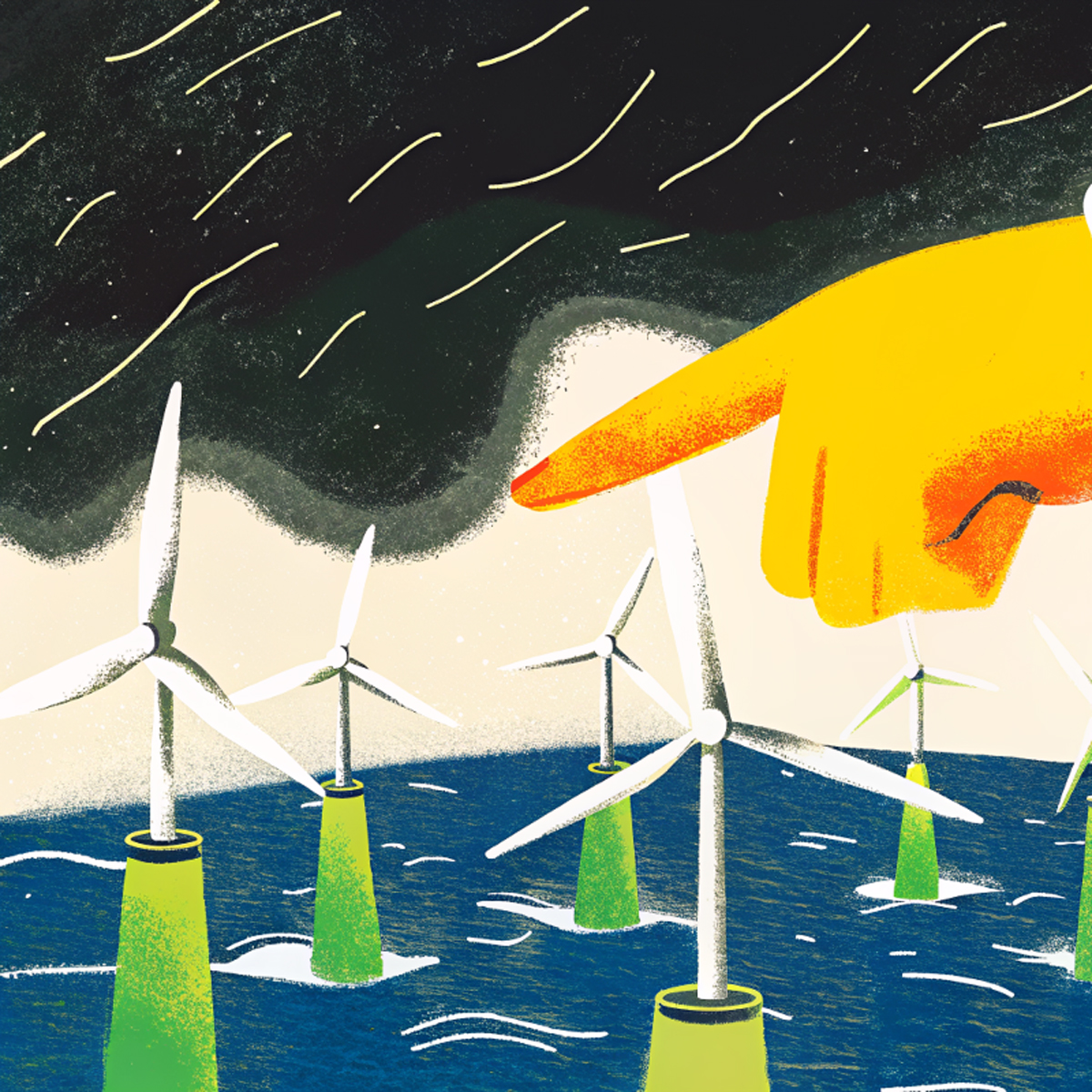“Extreme weather knocks out power for millions of customers.”
This headline – or some variation of it – is becoming a tired rerun in our weekly news feed.
It’s hard to believe that it’s almost been a year since winter storm Uri caused one of the biggest and deadliest electricity grid failures in Texas history. With the disaster’s one-year anniversary around the corner, we revisit what caused the extended blackout and discuss whether or not the Lone Star State is sufficiently prepared to protect its residents from another energy-related crisis.
A recap: What was the 2021 Texas power crisis?
On February 10th, record-breaking frigid temperatures rendered the majority of Texas’s power plants inoperable, triggering rolling blackouts that left millions of people without power. Over the next few days, the country watched in horror as the crisis escalated: Temperatures dipped into the single digits, many regions without reliable power also suffered water and food shortages, and a national disaster was officially declared. When the weather finally thawed a week later, the death toll had reached a grim 700 by some accounts, and the state was left with an estimated $130 billion in economic losses. Within a few weeks, five board members of the Electric Reliability Council of Texas (ERCOT), the organization that operates the electricity grid for the majority of the state, resigned.
The aftermath of the disaster was crowded with politicians, regulators, and other state leaders eager to place blame. Some conservative politicians grabbed at the opportunity to condemn renewable energy, incorrectly blaming wind and solar for the bulk of the outages. Even Texas Governor Greg Abbott threw renewables under the bus, stating, “It just shows that fossil fuel is necessary for the state of Texas… to make sure we'll be able to heat our homes in the winter time and cool our homes in the summertime.”
For many there was also an uncomfortable sense of déjà vu: Back in 2011, the state experienced a very similar weather-related electricity crisis, after which formal recommendations to winterize energy infrastructure went mostly ignored.
Regardless of who or what was to blame, there was widespread consensus that this absolutely cannot happen again.
The “perfect storm” of Texas grid failure
While it is clear that freezing temperatures triggered the initial power plant failures, a number of factors compounded on each other to create the “perfect storm” blackout.
First, Texas power plants were vulnerable to winter storms. In regions with seasonally cold weather, power plants undergo “winterizing” measures like pipe and equipment insulation to enable generation and transmission equipment to operate safely in frosty conditions. While Texas power plants can endure the state’s sweltering summer heat, they have historically not been winterized, as the process adds to construction and maintenance costs in a state that rarely sees freezing temperatures.
It’s no surprise, then, that when Uri blew in, production by all of Texas’s energy technologies took a severe hit. As snow obstructed some solar panels and icy winds froze wind turbines, nuclear and coal plants were also knocked offline. The state’s natural gas generation, which has the capacity to meet roughly half of the state’s winter demand, was hit the hardest. Natural gas plants fell offline and were unable to restart; pipes for transporting natural gas froze. At the same time, demand for natural gas to heat homes and businesses spiked, diverting essential fuel from the remaining online power plants. As demand threatened to escalate above the grid’s available supply, ERCOT was forced to implement rolling blackouts to prevent catastrophic grid failure. By mid-week, 45 gigawatts (GW) of generation – 28 GW of gas, coal, and nuclear and 18 GW of wind and solar – were offline. Natural gas production alone dropped by a whopping 45%. In total, roughly 11 million Texans lost power.
To top it off, the state’s electricity market structure exacerbated financial losses and its grid design left it without a safety net. Texas’s electricity grid is unique in that it isn’t connected to the rest of the country, which enables it to operate without federal regulation. However, this also meant that neighboring states couldn't export energy or provide other grid support during the crisis. In addition, Texas’s deregulated energy-only market incentivizes energy producers to increase prices based on supply and demand, in what some call a “crisis-based model.” During last February’s crisis, prices reached $9,000 per megawatt-hour (MWh), making costs astronomical for utilities providing power to their customers. Rayburn Electric Cooperative later stated that in five days, it had incurred three years worth of expenses. Brazos Electric Power Cooperative, one of the largest power cooperatives in the state, filed for bankruptcy with roughly $2 billion in debt to ERCOT.
Bolstering resiliency and reliability in ERCOT territory
In order to prevent another weather-related energy crisis, Texas needed to take several steps to update grid infrastructure to bolster resiliency and reliability. This includes weatherizing critical generation and transmission equipment, improving generation resource coordination, diversifying front-of-the-meter (FTM) resources and encouraging the development of behind-the-meter (BTM) distributed energy resources (DERs), and implementing new market rules to support them. These changes require top-down regulatory, legislative, and industry support.
The good news is that over the last year, the state has prioritized weatherization efforts and laid the groundwork for new standards and requirements. The Public Utilities Commission of Texas (PUCT) pushed to establish rules that require ERCOT to take steps to ensure that existing generation and transmission infrastructure will operate in cold weather. In accordance with these rules, ERCOT recently submitted its final winter weatherization readiness report with the PUCT, stating that of the 324 electric generation units and transmission facilities, 321 passed inspection based on the new winterization regulations. The remaining three are under investigation, but only make up about 0.5% of total generation capacity. Penalties reach up to $1 million per day for any energy producer who violates the new weatherization rules. In a press release about the inspections, Interim ERCOT CEO Brad Jones declared, “The Texas electric grid is more prepared for winter operations than ever before.”
In November, PUCT also adopted a pivotal new rule that will increase coordination and communication between natural gas facilities and electric utilities in order to ensure that critical natural gas facilities are prioritized during emergencies. On the market side, ERCOT lowered its price cap from $9,000/MWh to $5,000/MWh, which it says will reduce financial liability for market participants in times of scarcity, but will still be sufficient to incentivize demand response. In a December joint press conference with ERCOT, PUCT Chairman Peter Lake detailed their progress, stating, “The PUC is working at light speed to enhance our grid and ensure reliability for this winter. As a result of the combination of these efforts, the ERCOT grid today is stronger than ever.”
This year, ERCOT plans to implement additional reliability actions from the 60-point report it released last July. Remaining action items include a completed in-depth analysis of the blackout and other generation failures, eliminating barriers to energy storage and distributed generation, and improvements to black start capabilities.
Diversifying the state’s energy resources on both sides of the meter will further fortify the grid’s resiliency, but this will take years for the state to achieve. Notably, FTM energy storage systems can help generators mitigate gaps in real-time supply and demand, as well as support ancillary services. Energy storage can also serve as a non-wires alternative to transmission and distribution upgrades; however, under current regulations, the state’s transmission and distribution utilities (TDUs) are not allowed to own energy storage facilities, as the PUCT currently defines energy storage as a generation asset. Still, the Texas grid seems poised on the edge of an energy storage transformation: As of November, ERCOT’s interconnection queue had about 250 energy storage projects with a combined capacity of almost 10,000 megawatts – and 60 of them had a projected Commercial Operation Date in 2022.
Behind the meter, battery energy storage can help homes and businesses manage grid outages with on-site backup power, especially when paired with rooftop solar. What’s more, battery energy storage, rooftop solar, and other DERs can be aggregated into virtual power plants that provide demand-side grid services for utilities. However, Texas lacks any statewide, utility, or local incentives or rebates for battery energy storage, demand response, or solar net metering, which other states like California have successfully leveraged to lower financial barriers and encourage adoption of these technologies.
Stronger than ever
The reality is that Texas should already have been prepared for winter storm Uri, given the dozens of grid reliability update recommendations that were not implemented after Texas’s 2011 energy crisis. What’s more, as extreme weather will only continue to become more commonplace, grid operators all over the world will need to take more steps to enhance grid resiliency and implement market mechanisms and policies to support them.
The PUCT and ERCOT should be applauded for moving quickly with initial weatherization and regulatory steps in the past year, but there are other necessary measures that must be completed in order to achieve a sustainably reliable and resilient grid. Texas is well on its way to boasting a diversified, technology-backed grid, but sufficient large-scale energy storage projects that provide essential grid services have yet to come online, and demand-side financial incentives are still needed to facilitate customer adoption of DERs.
In short, the Texas grid is truly stronger than ever – but there’s still more work to be done.



























